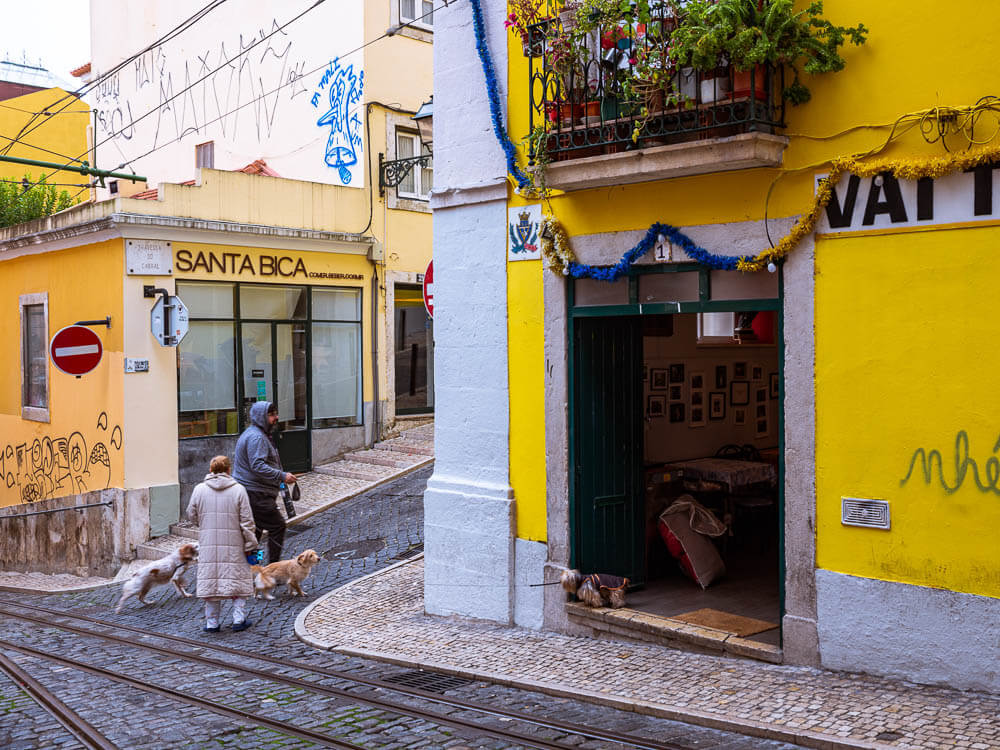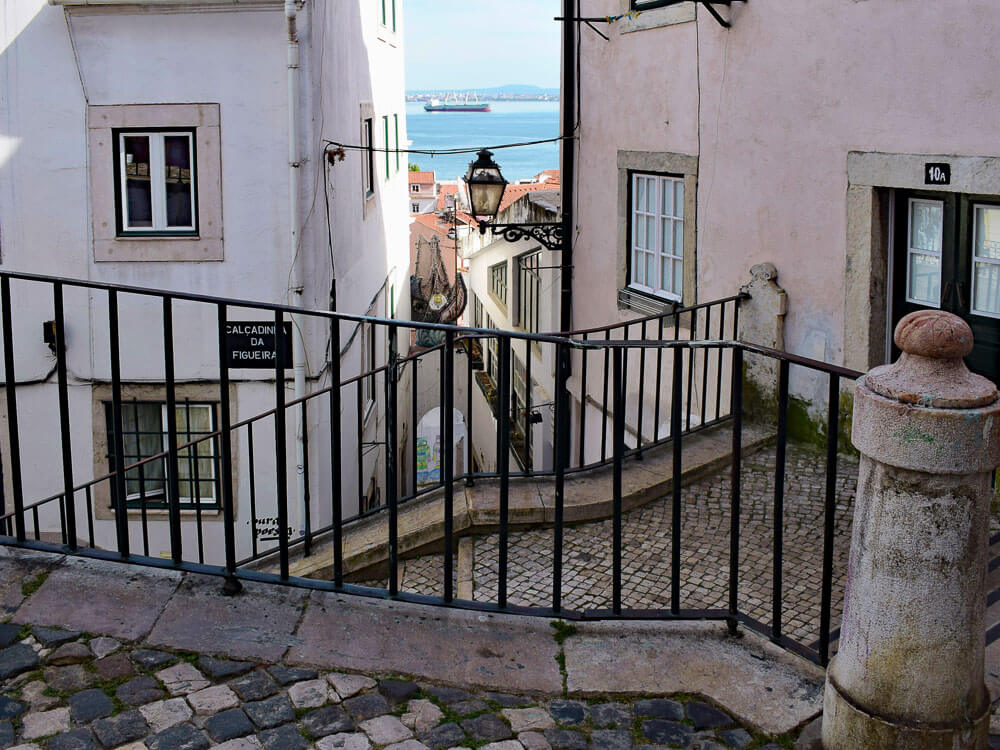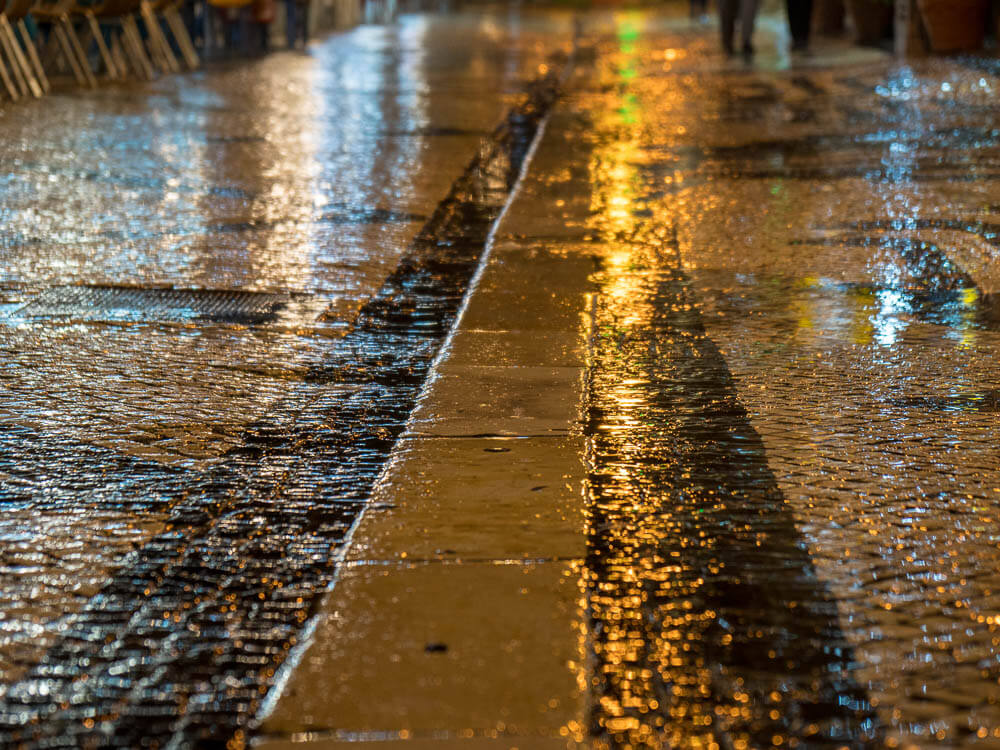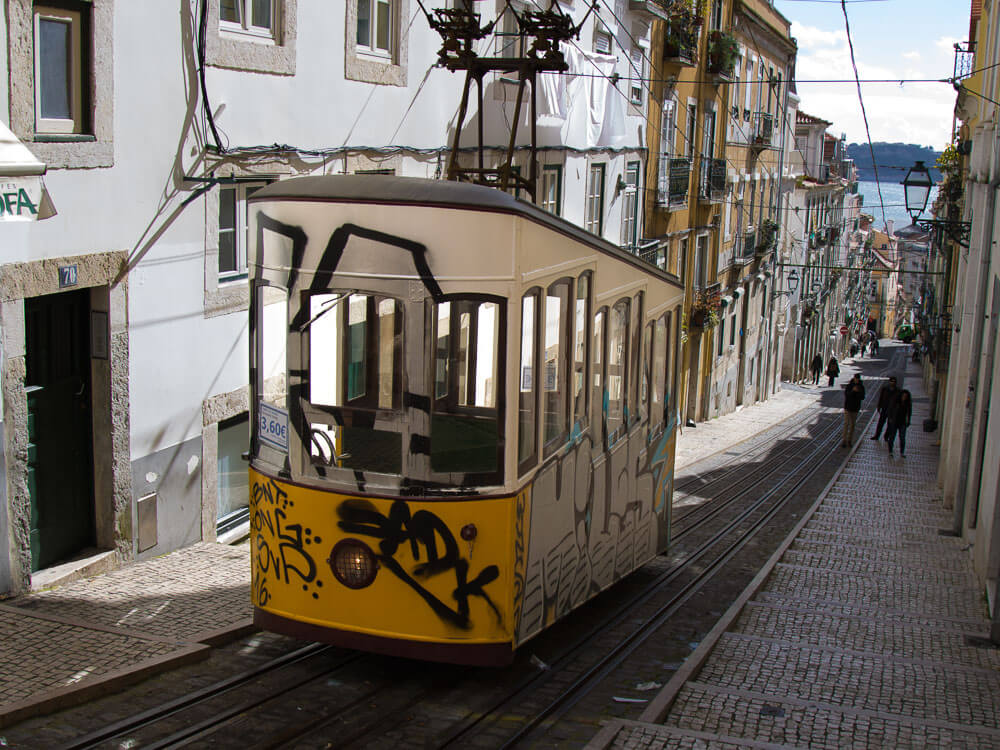Over the years, a lot of people have asked me about Lisbon’s walkability. After all, if there’s something that Lisbon is known for (besides, you know, the incredible food, beautiful historic buildings and welcoming locals) it’s its hills.
Though Lisbon’s hilly reputation may intimidate first time visitors, I assure you there’s no need to worry too much about it. There are plenty of pros (and some cons, of course) about walking in Lisbon. And I’ll tell you all about them in today’s post!
Short answer: is Lisbon walkable?
I’m not gonna keep you waiting for a simple yes or no answer. Here it goes: YES, Lisbon is walkable!
As I mentioned before, the city is indeed quite hilly, and it can be challenging to walk in it, especially if you’re not used to steep inclines and cobblestone streets. But, despite that, most people would agree with me that exploring Lisbon on foot is totally worth the effort.
Besides having a pedestrian-friendly layout, this is a compact city, with lots of attractions within walking distance from each other. So, is Lisbon walkable? Yes. But there are a few things that can help you navigate the city with more ease, as you’ll find out in the next topic.

Index
1. Ups and downs: things to consider for exploring Lisbon on foot
1.1. Get ready for hills and stairs on the streets of Lisbon

I’m not going to sugarcoat it: walking in Lisbon is definitely a workout. It’s impossible to avoid the hills: they’re everywhere from from north to south, east to west. And some of them are very steep! If you decide to walk to Bairro Alto from Cais do Sodré, you’ll understand exactly what I mean.
On top of that, the hills often have sidewalks paved with slippery Portuguese tiles and some areas are only accessible via a series of well-worn, uneven stairs. All of this means that walking in Lisbon can be challenging for some visitors, especially those with limited mobility.
Thankfully, the city has found ways to minimize the physical toll of these hills. That’s why you’ll find funiculars and elevators placed around the city, and they are definitely useful for reaching the steepest areas without having to exhaust ourselves.
1.1.1. What are the flat neighborhoods and which ones are hilly?
Although you’ll likely find at least one uphill street in every neighborhood, there are a couple of areas in Lisbon that are less hilly than others. Here’s a quick summary:
| Flat neighborhoods | Hilly neighborhoods |
| Baixa: the downtown area of Lisbon, known for its grid layout and relatively flat streets. It’s great for walking and is one of the main commercial districts of the city. | Alfama: the oldest neighborhoods in Lisbon, known for its narrow, winding streets and steep inclines. It offers stunning views but can be challenging to navigate. |
| Avenida da Liberdade: a wide boulevard, which connects Baixa with Marquês de Pombal Square. It’s flat and lined with trees, luxury shops, and restaurants. | Bairro Alto: famous for its nightlife, this area has steep streets that can be difficult to walk through (especially at night after a few drinks). |
| Parque das Nações: a modern area in the northeastern part of Lisbon, developed for the 1998 World Expo. It’s very flat and easy to walk around. There, you’ll find contemporary architecture, parks, and the Vasco da Gama shopping center.Santos: known as the design district, Santos has both flat and hilly areas. Closer to the river, it’s flatter, while the northern parts are more inclined. | Chiado: adjacent to Bairro Alto, this neighborhood also features some steep streets, though not as extreme as Bairro Alto or Alfama.Principe Real: close to Bairro Alto, this area is known for its gardens and 19th-century mansions but includes some steep streets. |
1.2. Enjoy walking tours in Lisbon
Whenever I’m traveling, I enjoy going on walking tours, because I think they help me get better oriented in the city than a bus or car tour would. In Lisbon particularly, another plus of exploring on foot is to be able to reach narrow alleys and streets that cars just can’t access.
Besides that, walking tours allow you to find hidden viewpoints that are often missed when traveling by vehicle, and see architectural details that you wouldn’t be able to if you were behind a window.
There are tons of walking tours available, and they’re usually led by local guides who have a deep understanding of Portugal’s history and culture. Here are my recommendations:
- Lisbon: History, Stories and Lifestyle Walking Tour: discover Lisbon on this guided walking tour with a local guide. Visit the historic Carmo Convent and the Santa Justa Lift, explore attractions in Baixa, then take a tram ride from the castle to Portas do Sol. You’ll also see the Monastery of São Vicente de Fora, the National Pantheon, and the Alfama district.
- Lisbon: Street Art Walk: explore Lisbon’s street art on a 3.5-hour walking tour for groups of up to 8 people, guided by a private expert. You’ll start in the Alfama district, visit the outdoor urban gallery in Bairro Alto, admiring tile work and sidewalk patterns, and discover hidden artistic spots. You may even see artists at work at Calçada da Glória!
- Lisbon: City Walking Tour with Food Tastings and Drinks: experience local cuisine while learning about Lisbon’s history and culture on this walking tour in the historic Baixa neighborhood. Your expert local guide will lead you and your group to the best places to sample authentic Portuguese dishes like presunto, chouriço, and seafood. This tour includes four alcoholic beverages, including Ginjinha and local wines like vinho verde.
1.3. Be careful with sidewalks and cobblestones

With its numerous sidewalks and pedestrian-only zones, Lisbon is a pedestrian-friendly city, especially in areas like Baixa and Chiado, with its numerous shops, cafés, and street performers.
However, there’s one downside to these sidewalks, or “calçadas portuguesas”. They’re made of a traditional Portuguese stone that, while very charming, is also very slippery. And you can imagine what happens when polished stones meet rain, right? They become extra dangerous.
To make sure you don’t slip, I recommend wearing shoes with good traction and, if you’re walking on a particularly slick surface, walking closer to buildings or along the streets.
Besides that, you should always pay attention to where you’re stepping, since a lot of the streets in Lisbon are made of uneven cobblestones. I recommend keeping an eye out for loose stones and, if you’re feeling insecure, trying to follow the same path as other people.
1.4. Wear appropriate shoes
Speaking of slippery streets, I think it’s worth emphasizing just how important it is to wear the right shoes when walking in Lisbon.
You have to remember that you’re not only dealing with slippery sidewalks, but also old cobblestone streets, lots of stairs, and unpredictable weather. That’s why you should bring comfortable walking shoes, preferably non-slip.
And you can forget about wearing high heels, sandals, and flip-flops, even though you might be tempted during the hot summer days. Trust me, there is absolutely nothing worse than accidentally kicking a stone when you’re wearing an open-toed shoe!
1.5. Check the weather forecast

Checking the weather forecast when visiting Lisbon is extremely important, because not only is this one of the sunniest capitals in Europe, with some very hot days, but it’s also prone to unexpected rain showers.
During the summer, you’ll find hot and dry conditions, with temperatures often exceeding 86ºF (30ºC). It can be quite jarring to explore Lisbon under the extreme heat, especially because there’s not a lot of shade in the city center.
In those cases, it’s essential that you stay hydrated, and don’t forget to wear light clothes, hats, apply sunscreen and take breaks when needed.
On the other hand, winter in Lisbon brings mild temperatures and frequent rain, from light showers to heavy downpours. This means you should be prepared for rainy weather, particularly if you’re visiting from November through February.
I recommend bringing a sturdy raincoat and an umbrella so you can keep exploring Lisbon even if you catch a couple of rainy days.
1.6. Take some safety precautions
Overall, Lisbon is very safe for travelers. Still, it’s important to stay vigilant, just like in any other major city. Better safe than sorry, right?
For instance, one of the biggest issues in the city are the pickpockets, which mostly happen in tourist-heavy areas. The best way to avoid these types of incidents is by staying aware of your surroundings and keeping a close eye on your belongings at all times.
And, if you go out at night, I recommend that you stick to well-lit paths and busy areas, avoiding secluded spots. By taking these simple but effective measures, you’ll be able to walk through Lisbon without having to worry about your safety.
2. Tired of walking the streets of Lisbon? Check out the alternatives

When you feel like you’ve had enough of climbing hills, or if you just don’t feel like walking at all, there are lots of transportation options in Lisbon.
Personally, I’d recommend alternating between walking and public transport to make the most of your time in the city, but that’s up to you! Here are your options:
2.1. Tram
Trams are a practical and reliable means of transportation in Lisbon, operating with high frequency throughout the day to take locals and visitors through the most narrow and steep streets in the city.
They’re not only convenient, but also affordable and well-connected to various parts of the city, since the network is integrated with buses, trains and metro services. You can buy single tickets or day passes for unlimited rides.
If you want to combine transportation and sightseeing, I recommend taking Tram 28, which will take you through historic districts like Alfama, Baixa, and Graça. Just beware of pickpockets!
2.2. Bus
Lisbon’s bus system, operated by Carris, is a convenient and affordable transport option that connects neighborhoods and landmarks throughout the city, and is particularly useful for getting to areas beyond the metro’s reach.
If you’re planning on exploring attractions such as Belém Tower and Parque das Nações, I recommend getting a 24-hour pass, which covers buses, trams and metro. That way, you won’t need to get separate tickets for each journey.
2.3. Metro
The Lisbon Metro is a practical way to navigate the city, as it connects all the major areas of the city through its four lines. Even the Humberto Delgado Airport is served by the metro, making it a lot easier to reach the city center if you’re traveling by plane.
To use the Lisbon Metro, you need a Navegante Card, a reusable card that you can buy and recharge at any subway terminal. It allows you to travel across multiple modes of transport within the city, including buses and trams.
2.4. Tuk-tuk
Tuk-tuks are another alternative to explore the city, offering an efficient and affordable way to navigate through Lisbon’s narrow streets. These small, three-wheeled vehicles can easily conquer steep inclines and they move quickly across the traffic, which makes them a great option for when you get tired of walking.
2.5. Bike
Although not as popular as in other cities, like Amsterdam, bikes have become more common in Lisbon in the past few years. It’s a great way to explore the riverside and other flat areas, but it’s a bit tricky to navigate the hills, cobblestones, tram lines, potholes and cars.
If you want to explore beyond the bike path along the river, you should be absolutely sure that you can handle urban cycling and climbing steep hills. Also, keep in mind that Portuguese drivers can be a bit impatient with bikes (but they’re becoming better at handling bikes!)
Don’t forget to wear appropriate gear for riding at night, such as headlights and taillights. And I recommend wearing a helmet at all times, even though it’s not required by law.
2.6. Uber/ taxi
In Lisbon, using a car is not really recommended for visitors. The streets are too narrow, there aren’t enough parking spots, and there’s a lot of traffic, especially during peak hours. It’s just not worth the trouble.
However, Ubers and taxis are good options for short trips within the city, as most rides in central Lisbon cost less than 5 Euros. It’s pretty affordable, and you won’t have to worry about parking!
Just be careful when using taxis in Lisbon, since some drivers overcharge tourists. To avoid this issue, make sure that the meter is running or use apps where prices are fixed and clear.
2.7. Funicular
Lisbon’s funiculars are historic and practical transport options, especially given the city’s challenging terrain. They’ve been operating for over a century, helping locals and tourists navigate the city’s steep hills while offering scenic views.
There are three of them: Elevador da Glória, which connects Baixa with Bairro Alto, Elevador da Bica, which takes you from Cais do Sodré to Bairro Alto, and Elevador da Lavra, which climbs from Avenida da Liberdade to Torel Park.
Ready to explore Lisbon on foot?

I hope this guide has been helpful in answering once and for all whether Lisbon is walkable or not. And, just in case you’re just tuning in, yes, it is! It may be a bit of a workout, but hey, at least it comes with incredible views!
So, pack your most comfortable walking shoes and have a great time exploring Lisbon in the most practical and affordable way: on foot.







